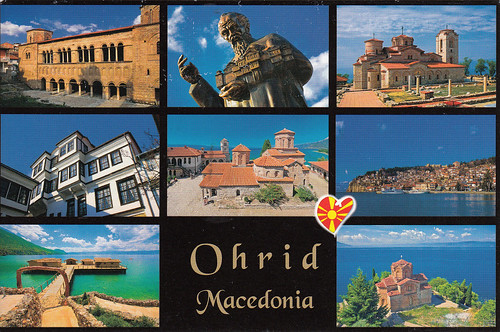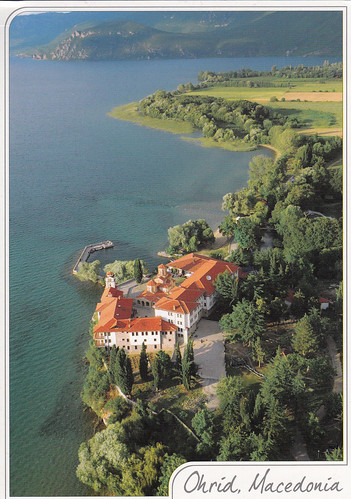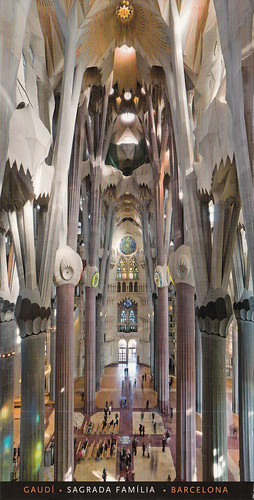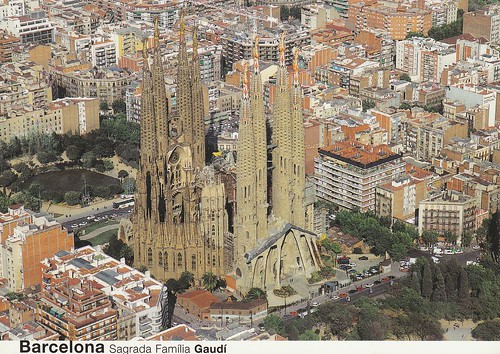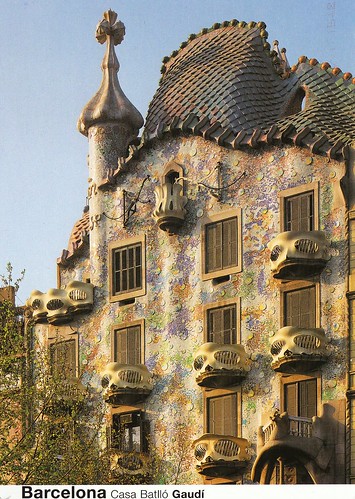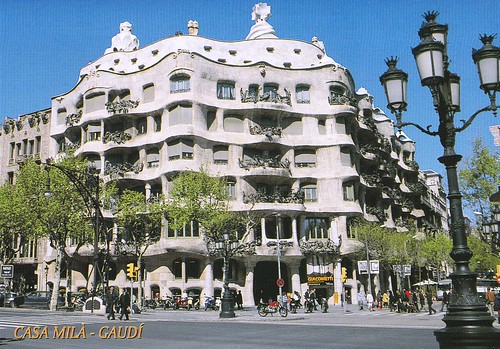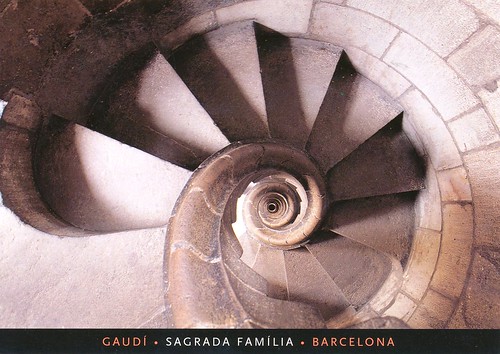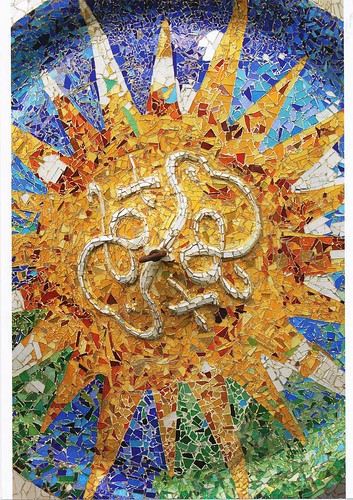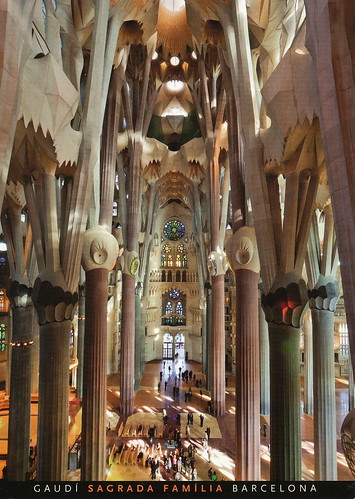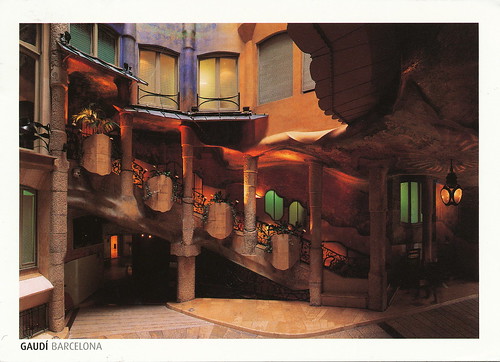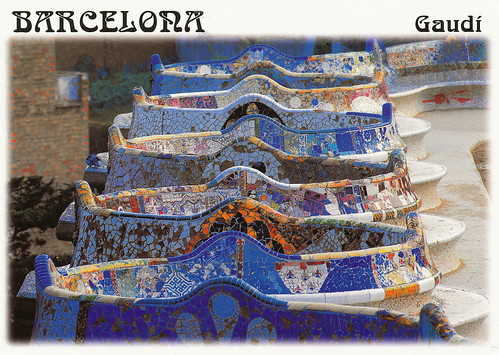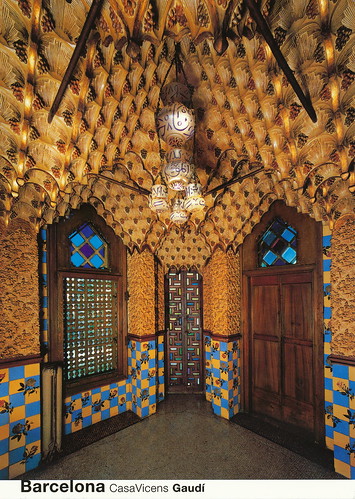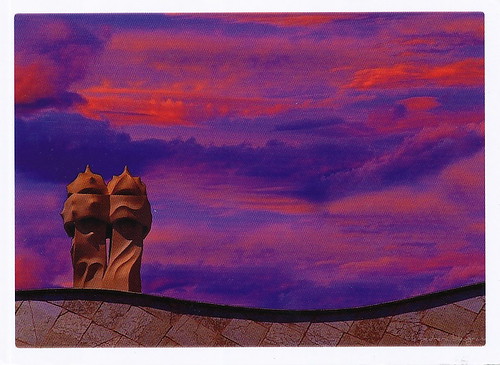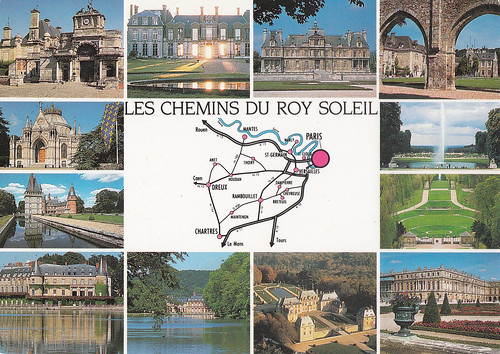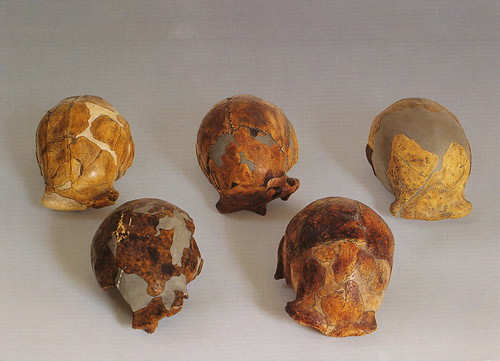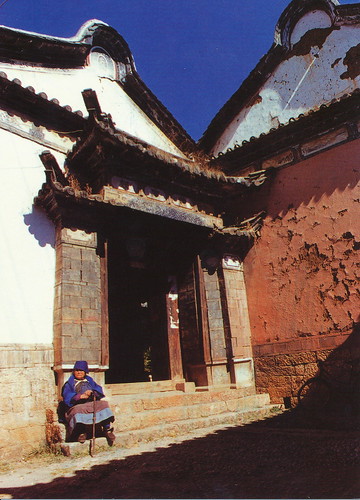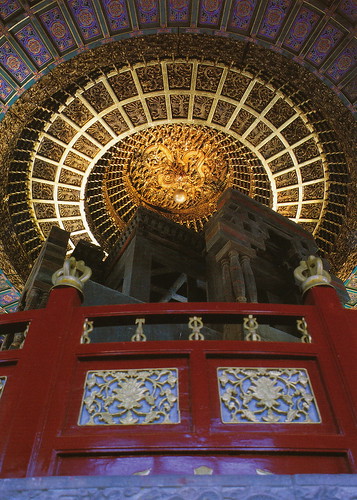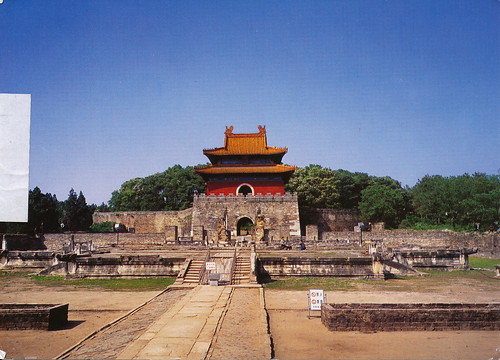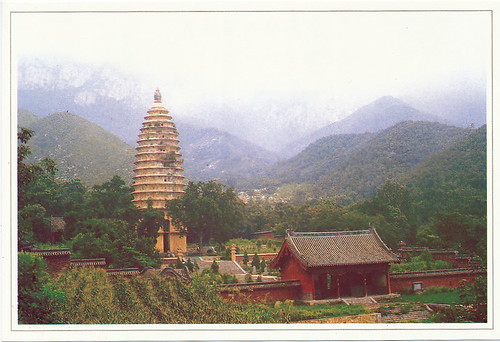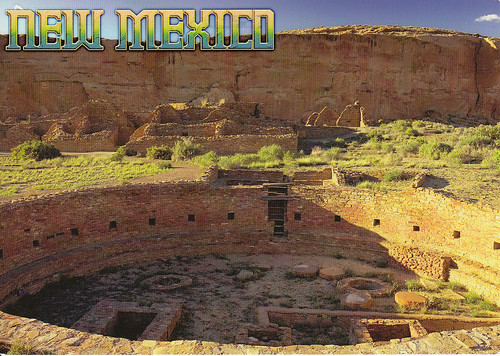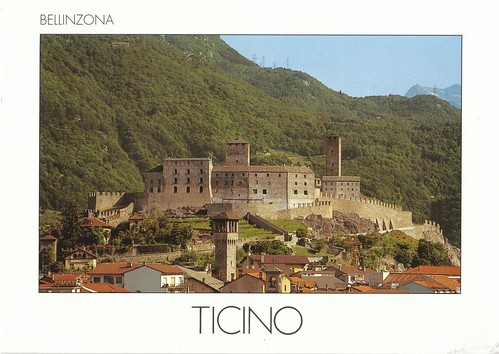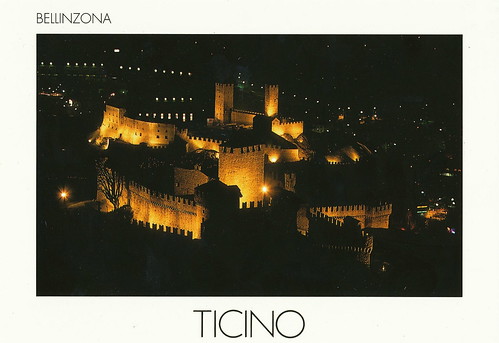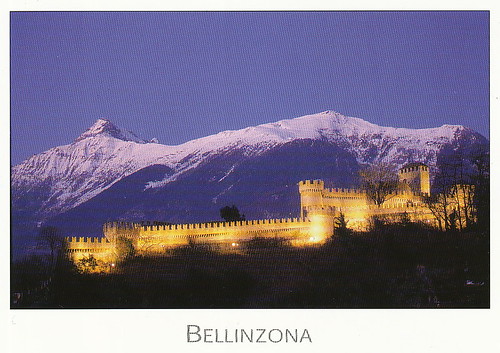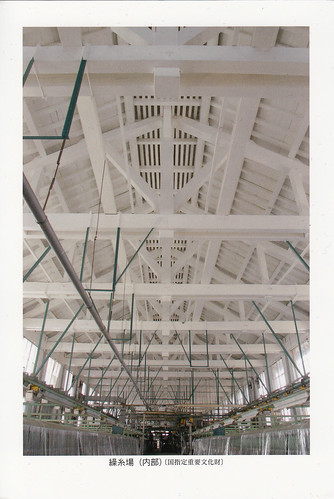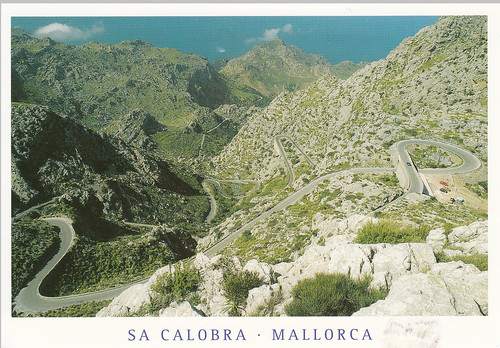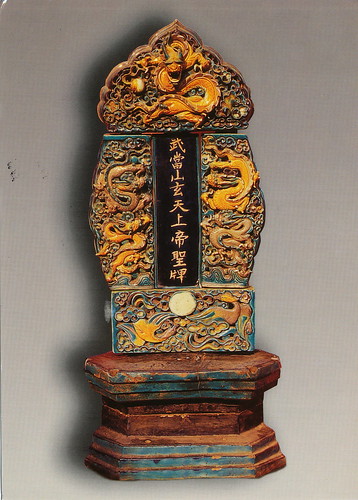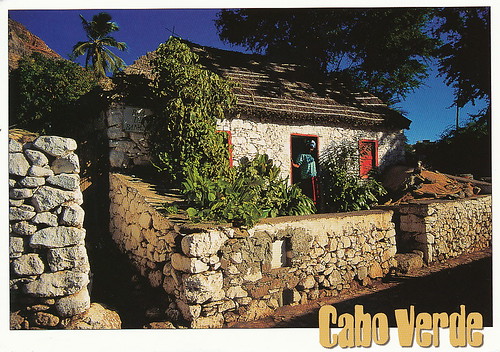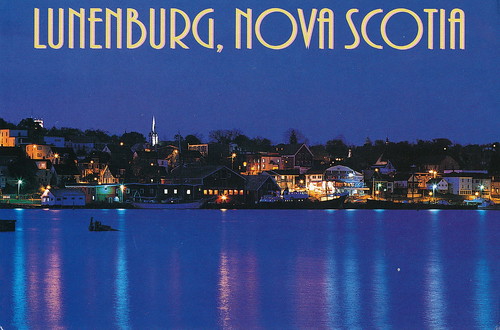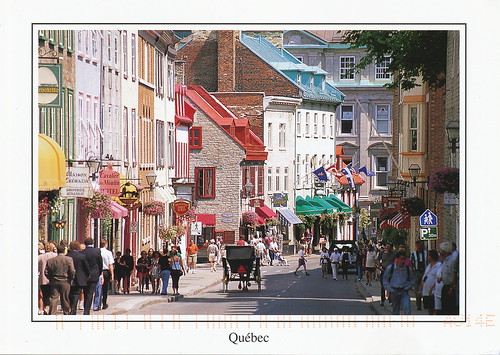Situated on the shores of Lake Ohrid, the town of Ohrid is one of the oldest human settlements in Europe. Built mainly between the 7th and 19th centuries, it has the oldest Slav monastery (St Pantelejmon) and more than 800 Byzantine-style icons dating from the 11th to the end of the 14th century. After those of the Tretiakov Gallery in Moscow, this is considered to be the most important collection of icons in the world
Year of Inscription: 1979
further Informations: http://whc.unesco.org/en/list/99
12/10/2014
Spain - Works of Anton Gaudi
Seven properties built by the architect Antoni Gaudí (1852–1926) in or near Barcelona testify to Gaudí’s exceptional creative contribution to the development of architecture and building technology in the late 19th and early 20th centuries. These monuments represent an eclectic, as well as a very personal, style which was given free reign in the design of gardens, sculpture and all decorative arts, as well as architecture. The seven buildings are: Parque Güell; Palacio Güell; Casa Mila; Casa Vicens; Gaudí’s work on the Nativity façade and Crypt of La Sagrada Familia; Casa Batlló; Crypt in Colonia Güell.
Year of Inscription: 1984
further Informations: http://whc.unesco.org/en/list/320
Year of Inscription: 1984
further Informations: http://whc.unesco.org/en/list/320
06/08/2014
Japan - Sacred Sites and Pilgrimage Routes in the Kii Mountain Range
Set in the dense forests of the Kii Mountains overlooking the Pacific Ocean, three sacred sites – Yoshino and Omine, Kumano Sanzan, Koyasan – linked by pilgrimage routes to the ancient capital cities of Nara and Kyoto, reflect the fusion of Shinto, rooted in the ancient tradition of nature worship in Japan, and Buddhism, which was introduced from China and the Korean Peninsula. The sites (495.3 ha) and their surrounding forest landscape reflect a persistent and extraordinarily well-documented tradition of sacred mountains over 1,200 years. The area, with its abundance of streams, rivers and waterfalls, is still part of the living culture of Japan and is much visited for ritual purposes and hiking, with up to 15 million visitors annually. Each of the three sites contains shrines, some of which were founded as early as the 9th century.
Year of Inscription: 2004
further Informations: http://whc.unesco.org/en/list/1142
Year of Inscription: 2004
further Informations: http://whc.unesco.org/en/list/1142
04/08/2014
France - The Loire Valley between Sully-sur-Loire and Chalonnes
The Loire Valley is an outstanding cultural landscape of great beauty, containing historic towns and villages, great architectural monuments (the châteaux), and cultivated lands formed by many centuries of interaction between their population and the physical environment, primarily the river Loire itself.
Year of Inscription: 2000
further Informations: http://whc.unesco.org/en/list/933
Year of Inscription: 2000
further Informations: http://whc.unesco.org/en/list/933
02/08/2014
China - Peking Man Site at Zhoukoudian
Scientific work at the site, which lies 42 km south-west of Beijing, is still underway. So far, it has led to the discovery of the remains of Sinanthropus pekinensis, who lived in the Middle Pleistocene, along with various objects, and remains of Homo sapiens sapiens dating as far back as 18,000–11,000 B.C. The site is not only an exceptional reminder of the prehistorical human societies of the Asian continent, but also illustrates the process of evolution.
Year of Inscription: 1987
http://whc.unesco.org/en/list/449
Year of Inscription: 1987
http://whc.unesco.org/en/list/449
30/07/2014
China - Old Town of Lijiang
The Old Town of Lijiang, which is perfectly adapted to the uneven topography of this key commercial and strategic site, has retained a historic townscape of high quality and authenticity. Its architecture is noteworthy for the blending of elements from several cultures that have come together over many centuries. Lijiang also possesses an ancient water-supply system of great complexity and ingenuity that still functions effectively today.
Year of Inscription: 1997
http://whc.unesco.org/en/list/811
Year of Inscription: 1997
http://whc.unesco.org/en/list/811
26/07/2014
China - Mountain Resort and its Outlying Temples, Chengde
The Mountain Resort (the Qing dynasty's summer palace), in Hebei Province, was built between 1703 and 1792. It is a vast complex of palaces and administrative and ceremonial buildings. Temples of various architectural styles and imperial gardens blend harmoniously into a landscape of lakes, pastureland and forests. In addition to its aesthetic interest, the Mountain Resort is a rare historic vestige of the final development of feudal society in China.
Year of Inscription: 1994
http://whc.unesco.org/en/list/703
Year of Inscription: 1994
http://whc.unesco.org/en/list/703
24/07/2014
China - Imperial Tombs of the Ming and Qing Dynasties
It represents the addition of three Imperial Tombs of the Qing Dynasty in Liaoning to the Ming tombs inscribed in 2000 and 2003. The Three Imperial Tombs of the Qing Dynasty in Liaoning Province include the Yongling Tomb, the Fuling Tomb, and the Zhaoling Tomb, all built in the 17th century. Constructed for the founding emperors of the Qing Dynasty and their ancestors, the tombs follow the precepts of traditional Chinese geomancy and fengshui theory. They feature rich decoration of stone statues and carvings and tiles with dragon motifs, illustrating the development of the funerary architecture of the Qing Dynasty. The three tomb complexes, and their numerous edifices, combine traditions inherited from previous dynasties and new features of Manchu civilization.
year of Inscription: 2004
http://whc.unesco.org/en/list/1004
year of Inscription: 2004
http://whc.unesco.org/en/list/1004
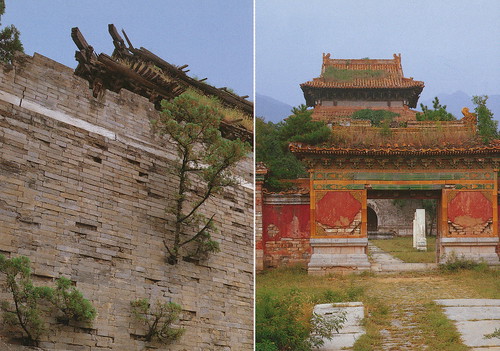 |
22/07/2014
China - Historic Monuments of Dengfeng in “The Centre of Heaven and Earth”
Mount Songshang is considered to be the central sacred mountain of China. At the foot of this 1500 metre high mountain, close to the city of Dengfeng in Henan province and spread over a 40 square-kilometre circle, stand eight clusters of buildings and sites, including three Han Que gates - remains of the oldest religious edifices in China -, temples, the Zhougong Sundial Platform and the Dengfeng Observatory. Constructed over the course of nine dynasties, these buildings are reflections of different ways of perceiving the centre of heaven and earth and the power of the mountain as a centre for religious devotion. The historical monuments of Dengfeng include some of the best examples of ancient Chinese buildings devoted to ritual, science, technology and education.
Year of Inscription: 2010
further Informations: http://whc.unesco.org/en/list/1305
Year of Inscription: 2010
further Informations: http://whc.unesco.org/en/list/1305
20/07/2014
China - Dazu Rock Carvings
The steep hillsides of the Dazu area contain an exceptional series of rock carvings dating from the 9th to the 13th century. They are remarkable for their aesthetic quality, their rich diversity of subject matter, both secular and religious, and the light that they shed on everyday life in China during this period. They provide outstanding evidence of the harmonious synthesis of Buddhism, Taoism and Confucianism.
Year of Inscription: 1999
further Informations: http://whc.unesco.org/en/list/912
Year of Inscription: 1999
further Informations: http://whc.unesco.org/en/list/912
18/07/2014
USA - Chaco Culture
For over 2,000 years, Pueblo peoples occupied a vast region of the south-western United States. Chaco Canyon, a major centre of ancestral Pueblo culture between 850 and 1250, was a focus for ceremonials, trade and political activity for the prehistoric Four Corners area. Chaco is remarkable for its monumental public and ceremonial buildings and its distinctive architecture – it has an ancient urban ceremonial centre that is unlike anything constructed before or since. In addition to the Chaco Culture National Historical Park, the World Heritage property includes the Aztec Ruins National Monument and several smaller Chaco sites managed by the Bureau of Land Management.
Switzerland - Three Castles, Defensive Wall and Ramparts of the Market-Town of Bellinzona
The Bellinzona site consists of a group of fortifications grouped around the castle of Castelgrande, which stands on a rocky peak looking out over the entire Ticino valley. Running from the castle, a series of fortified walls protect the ancient town and block the passage through the valley. A second castle (Montebello) forms an integral part of the fortifications, while a third but separate castle (Sasso Corbaro) was built on an isolated rocky promontory south-east of the other fortifications.
Date of Inscription: 2000
further Informations: http://whc.unesco.org/en/list/884
Japan - Tomioka Silk Mill and Related Sites
Tomioka Silk Mill and Related Sites (Japan) is an historic sericulture and silk mill complex established in 1872 in the Gunma Prefecture north west of Tokyo. Built by the Japanese Government with machinery imported from France, it consists of four sites that attest to the different stages in the production of raw silk: production of cocoons in an experimental farm; a cold storage facility for silkworm eggs; reeling of cocoons and spinning of raw silk in a mill; and a school for the dissemination of sericulture knowledge. It illustrates Japan’s desire to rapidly adopt the best mass production techniques, and became a decisive element in the renewal of sericulture and the Japanese silk industry in the last quarter of the 19th century. It marked Japan’s entry into the modern, industrialized era, and propelled it to become the world’s leading exporter of raw silk, notably to France and Italy.
Date of Inscription: 2014
further Informations: http://whc.unesco.org/en/list/1449
Date of Inscription: 2014
further Informations: http://whc.unesco.org/en/list/1449
16/07/2014
Spain - Cultural Landscape of the Serra de Tramuntana
The Cultural Landscape of the Serra de Tramuntana located on a sheer-sided mountain range parallel to the north-western coast of the island of Mallorca. Millennia of agriculture in an environment with scarce resources has transformed the terrain and displays an articulated network of devices for the management of water revolving around farming units of feudal origins. The landscape is marked by agricultural terraces and inter-connected water works - including water mills - as well as dry stone constructions and farms.
Year of Inscription: 2011
further Informations: http://whc.unesco.org/en/list/1371
Year of Inscription: 2011
further Informations: http://whc.unesco.org/en/list/1371
14/07/2014
China - Ancient Building Complex in the Wudang Mountains
The palaces and temples which form the nucleus of this group of secular and religious buildings exemplify the architectural and artistic achievements of China's Yuan, Ming and Qing dynasties. Situated in the scenic valleys and on the slopes of the Wudang mountains in Hubei Province, the site, which was built as an organized complex during the Ming dynasty (14th–17th centuries), contains Taoist buildings from as early as the 7th century. It represents the highest standards of Chinese art and architecture over a period of nearly 1,000 years.
Year of inscription: 1994
further Informations: http://whc.unesco.org/en/list/705
Year of inscription: 1994
further Informations: http://whc.unesco.org/en/list/705
12/07/2014
Cabo Verde - Cidade Velha, Historic Centre of Ribeira Grande
The town of Ribeira Grande, renamed Cidade Velha in the late 18th century, was the first European colonial outpost in the tropics. Located in the south of the island of Santiago, the town features some of the original street layout impressive remains including two churches, a royal fortress and Pillory Square with its ornate 16th century marble pillar.
Year of Inscription: 2009
further Informations: http://whc.unesco.org/en/list/1310
Year of Inscription: 2009
further Informations: http://whc.unesco.org/en/list/1310
10/07/2014
Canada - Nahanni National Park
Located along the South Nahanni River, one of the most spectacular wild rivers in North America, this park contains deep canyons and huge waterfalls, as well as a unique limestone cave system. The park is also home to animals of the boreal forest, such as wolves, grizzly bears and caribou. Dall's sheep and mountain goats are found in the park's alpine environment.
Year of Inscription: 1978
Further Informations: http://whc.unesco.org/en/list/24
Year of Inscription: 1978
Further Informations: http://whc.unesco.org/en/list/24
08/07/2014
Canada - Old Town Lunenburg
Lunenburg is the best surviving example of a planned British colonial settlement in North America. Established in 1753, it has retained its original layout and overall appearance, based on a rectangular grid pattern drawn up in the home country. The inhabitants have managed to safeguard the city's identity throughout the centuries by preserving the wooden architecture of the houses, some of which date from the 18th century.
Year of Inscription: 1995
further Informations: http://whc.unesco.org/en/list/741
Year of Inscription: 1995
further Informations: http://whc.unesco.org/en/list/741
06/07/2014
Canada - Historic District of Old Québec
Québec was founded by the French explorer Champlain in the early 17th century. It is the only North American city to have preserved its ramparts, together with the numerous bastions, gates and defensive works which still surround Old Québec. The Upper Town, built on the cliff, has remained the religious and administrative centre, with its churches, convents and other monuments like the Dauphine Redoubt, the Citadel and Château Frontenac. Together with the Lower Town and its ancient districts, it forms an urban ensemble which is one of the best examples of a fortified colonial city.
Year of inscription: 1985
further Informations: http://whc.unesco.org/en/list/300
Year of inscription: 1985
further Informations: http://whc.unesco.org/en/list/300
04/07/2014
Denmark - Roskilde Cathedral
Built in the 12th and 13th centuries, this was Scandinavia's first Gothic cathedral to be built of brick and it encouraged the spread of this style throughout northern Europe. It has been the mausoleum of the Danish royal family since the 15th century. Porches and side chapels were added up to the end of the 19th century. Thus it provides a clear overview of the development of European religious architecture.
year of Inscription: 1995
further Informations: http://whc.unesco.org/en/list/695
year of Inscription: 1995
further Informations: http://whc.unesco.org/en/list/695
 |
Subscribe to:
Posts (Atom)
